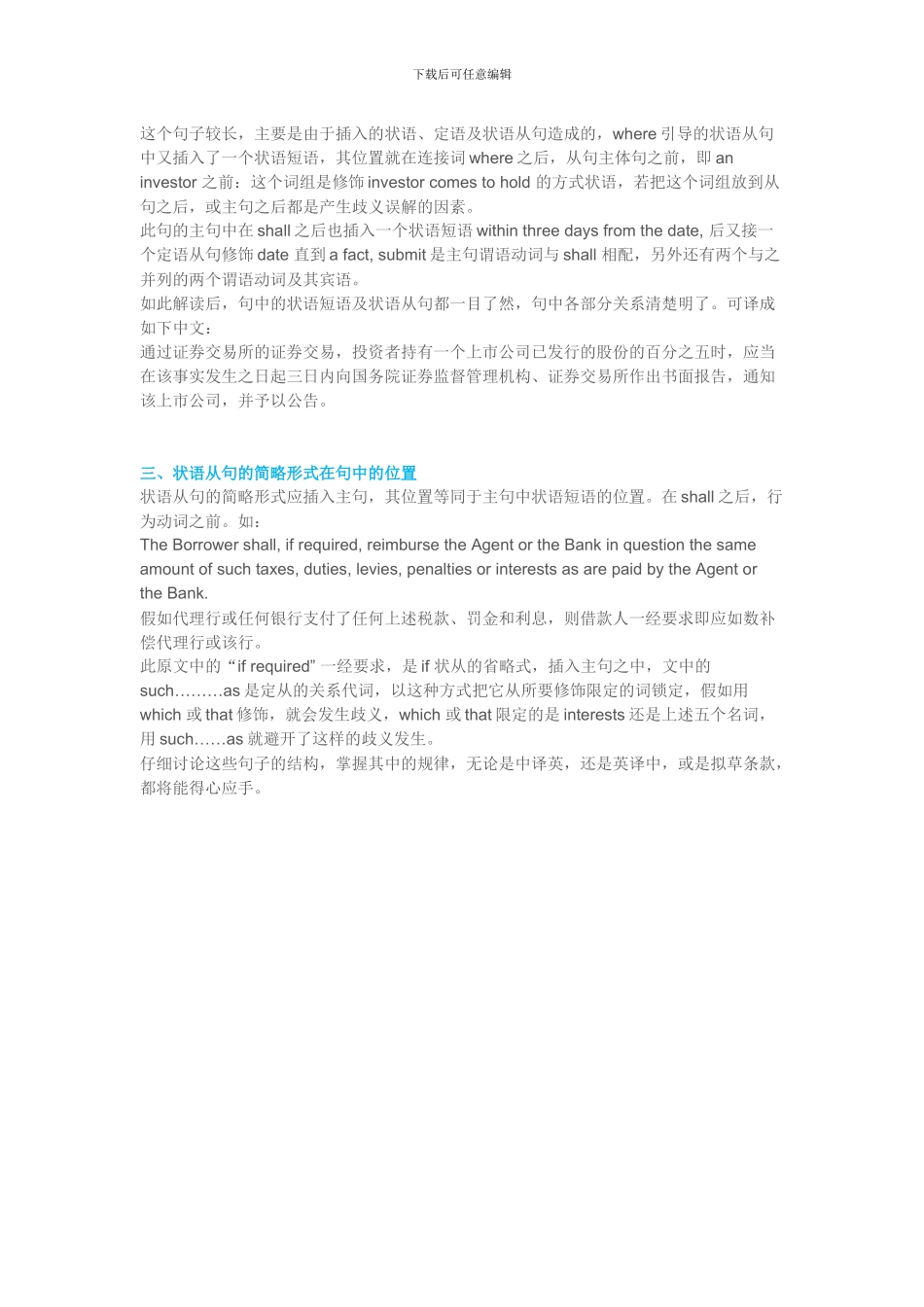下载后可任意编辑状语的定位直接影响英文合同翻译的效果吗?泛瑞翻译英文合同里的句子具有结构严谨、句式较长的特点,这是为了使表达的内容准确、严密、清楚、易解(无歧意)而特别设定的。其中主要是状语的定位问题,主句的状语和从句的状语都各居各位,也是为了不与定语相混淆。一、主句中的状语位置由于法律的语言特点,法律文件中的英语句子的状语有其自己的规则,其位置与基础英语中的频度副词(如 often, sometime, never 等)的位置相同,一般放在助动词之后,行为动词之前。如:The securities regulatory authorities under the State Council shall, in accordance with law, implement centralized and unified regulation and supervision of the securities market nationwide. The securities regulatory authorities under the State Council may, where necessary, establish agencies that shall perform the regulatory functions as authorized.国务院证券监督管理机构依法对全国证券市场实行集中统一监督管理。国务院证券监督管理机构根据需要可以设立派出机构,根据授权履行监督管理职责。假如把第一句中的插入状语移动到句末,即 nationwide 之后就有可能把其误解成 market nationwide 的定语或是状语,但修饰动词 implement 的势力很弱,可用一个很简单的例子来说明这一点,如:I fed the white dog there.There 放在句末就有可能产生两种句意:其一:I fed the white dog which was there.其二:In that place I fed the white dog.因此为了避开发生这样的歧义,使表达的意思准确,主句的状语便紧紧地设定在 shall 之后,行为动词之前,以最捷径的办法限定动词,避开误解。第二句中的 where necessary, 以同样的道理,设定在 may 与 establish 之间。二、状语在从句中的位置法律文件,合同文件中常常用复合句,从句中的状语与主句中的状语应各有其位,不能互相混淆,分辨不清、产生歧义,造成合同双方争议,因此从句中的状语通常都锁定在从句之内,状语一般开门见山,放在从句连接词(when, if 等)之后,从句主体句之前,常用逗号分隔,以示其是插入的状语。如:Where, through securities trading at a stock exchange, an investor comes to hold 5 percent of shares issued by a listed company, the...

